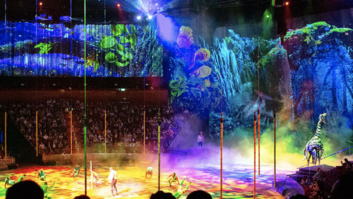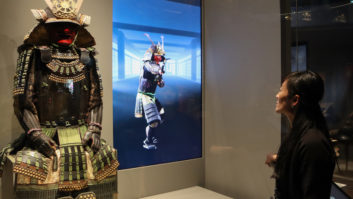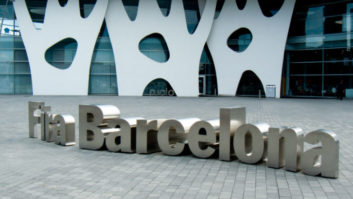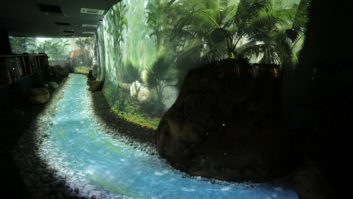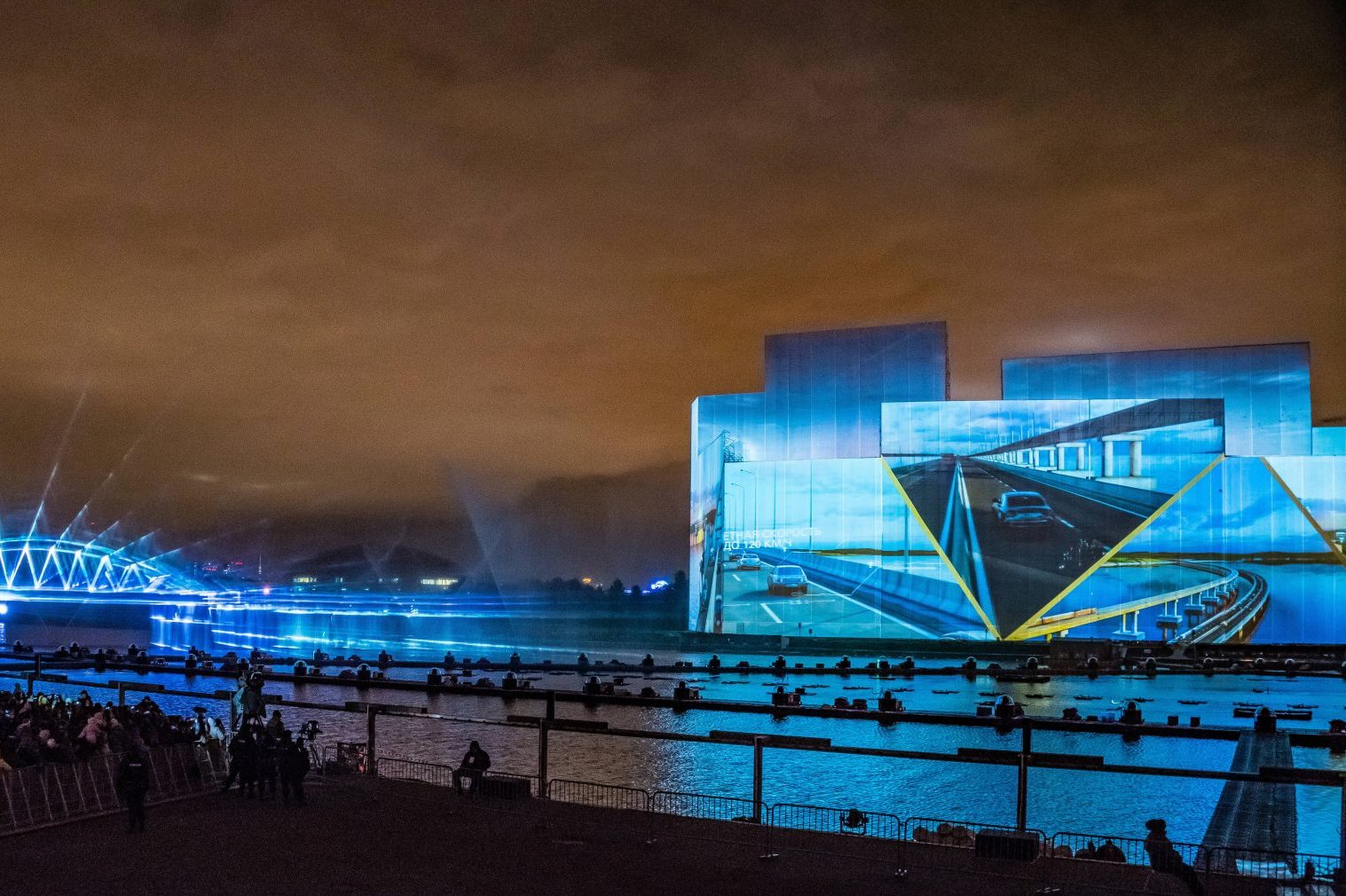
In the first part of this special report into projection mapping we looked at the transformative developments taking projection mapping to new levels. Here Ian McMurray considers the factors that are driving advances.
“In order to run advanced projection mapping software solutions, a signal processing environment is required that supports a variety of set-ups and can bring the much-needed performance power to the project,” says Hans Stucken, global marketing manager of AV Stumpfl. “It’s relatively easy to build hardware that looks powerful on paper, but aligning the hardware components and software features in a way that allows for exceptional functionality and reliability is a great challenge, for which you need a team of dedicated engineers.”
“Typically, specialist servers can be used to visualise the entire multi-channel environment which is an important factor for complex mapped displays,” explains Matt Barton, CEO at 7thSense Design. “This pre-visualisation enables engineers to correct for occlusions, shadows and overlap.”
Carl Rijsbrack, VP, events at Barco, notes another important outcome of the transition to 4K and solid-state illumination (SSI) in terms of projector development, with manufacturers applying more emphasis to the functionality needed for projection mapping now that projectors are even better equipped for the application. “Historically – prior to the advent of 4K and laser illumination – most of the technology required for projection mapping was server-side,” he says. “Now, it’s both: the two work more and more in tandem. The increased computing power inside projectors allows this combination to step up to the demanded performance levels both in content delivery, latency, picture accuracy, alignment and warping.”
That projection mapping has developed rapidly in recent years is unquestioned. What, though, has driven those advances? Stucken brings an interesting perspective. “Nowadays, there’s a variety of interesting low-budget apps and software solutions out there, which enable a lot of talented people to experiment with projection mapping to various degrees,” he notes. “This generates wider interest in projection mapping solutions – and also creates a lot of new impulses for the AV industry. At the same time, all the major manufacturers have their own roadmaps based on their current customer feedback and strategic goals.”
Creative demands
Barton also sees the technology being driven by the increasingly creative demands of users. “We see a lot of change driven by media and experience creatives,” he discloses. “We regularly speak with creatives within industry to understand what it is they want to achieve, what their clients are asking for, and develop our products to align new features with their vision.”
Mark Wadsworth, international marketing manager at Digital Projection, sees things similarly. “The whole development cycle is 100% driven by listening to the customer, their feedback and requirements,” he confirms. “There is no point in developing ‘cool features’ that the customer doesn’t want, so the mapping aspect of projection technology is definitely customer led.”
“The visitor attraction market drives a lot of our development,” he adds. “Whether it’s for dark rides or immersive geodesic domes, they all require mapping/warping features, long-life illumination and stability, as well as the latest in signal distribution at 4K or HD at high frame rates.”
Earlier, Rijsbrack noted that an advantage of SSI-based projectors is the potential they deliver for longer-term installations – “now, they can run for 10 years without a lamp change, and delivering constant image performance,” he adds – something that has not normally been part of the projection mapping world: the technology has historically been all about one-off spectaculars.
“Yes, it’s very much been the case so far that projection mapping has been used primarily for live events,” says Paul Wigfield, director of projection mapping and 3D projection specialists QED, “although there are a few permanent indoor projection mapping installations – QED has designed and installed a few of them. Aside from theme parks, permanent outdoor projection installations have not really been possible due to the difficulties of maintaining the installations and the high running costs.”
Likely to change
“However,” he continues, “this is very much likely to change. The advent of high-brightness laser light source projection technology has meant a massive leap in brightness, consistency and reliability, but it’s the savings on power and lamp replacement costs combined with the longevity of the lasers that now make permanent outdoor projection mapping a much more financially feasible and practically manageable proposition. Laser phosphor projectors are likely to prove most cost-effective for event usage, whereas RGB lasers are likely to be more suited for large-scale permanent installations.”
Barton concurs: “Historically, projection mapping has been used a lot in live events, including daily shows at theme parks,” he says. “We’re now seeing more and more fixed installations that use projection mapping technology as designers work to bring new ways of experiencing ‘3D without glasses’ to their audiences.”
Stucken makes the point that, traditionally, it was perhaps the sheer scale of the images delivered at events using projection mapping captured attention – but that may be changing. “Large-scale projection mapping is most visible when being used in connection with massive buildings or landmark sites, which is why a lot of people associate it primarily with those events,” he believes. “But now, themed attraction environments and museums are increasingly using projection mapping approaches as well – but in those cases, the results don’t so much draw attention to the technology used, but rather to the exhibits and environments they’re supporting.”
And, as Wadsworth points out, longer-term projection mapping installations are not wholly unknown. “It’s certainly fair to say that mapping mostly seems to be used for temporary events or festivals,” he says, “but we’re seeing more and more that have become permanent or semi-permanent installations. For example, CityWalk in Dubai is a permanent mapping installation that uses 36 projectors to map onto the walls of the venue, and Antalya Expo used 60 projectors that were permanently installed for the whole of the expo. This is where the long-life and reliability factor comes in to play.”
Picture: Dream Laser
www.7thsensedesign.com
www.avstumpfl.com
www.barco.com
www.digitalprojection.co.uk
www.qedproductions.com

